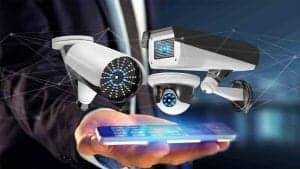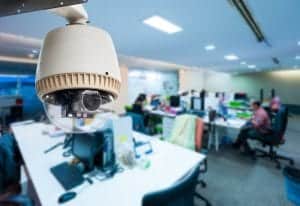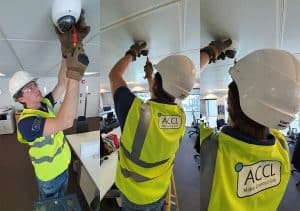From the outside, it seems almost as if the Internet has rendered traditional physical security concerns obsolete. But physical and network security are, in fact, interlinked. This is something that has been long since recognized by network security experts and exemplified time and time again. Oftentimes, physical intrusion is in fact the first step of a concerted network attack, as it famously happened in the 2014 Sony breach.
Therefore, it comes as no surprise that physical security is such an important concern for companies in the UK. Physical access control is one of the fundamental building blocks of modern security practices, making security and surveillance systems one of the most important assets that a company has in the struggle to protect its data and its business interests.
IT-Integrated Security
In recent years, security systems have become increasingly integrated into the IT systems of the organizations which use them. This trend has been driven by two factors. First, the important role that physical security in the overall data and network security strategy of an organization has inherently made it increasingly important to coordinate IT and security efforts. Second, allowing security devices to be monitored and managed as any other networked device has made it easier and less expensive to deploy and maintain security systems, while also making monitoring, management and auditing easier and more flexible.
The move towards high-speed network integration has made it possible to scale security operations to organizations with as much as hundreds of thousands of IDs, while significantly saving costs associated with maintenance and credential management. Such systems continuously collect access and surveillance data from security devices, besides issuing control and management commands; consequently, they have very high data demands.
Modern security devices are, therefore, important sources (and destinations) of traffic in a company’s network. They exchange data and – as far as the network is concerned – they look very much like regular computers, except they perform only certain specific tasks. However, the fact that these devices can communicate through the same means as computers do is where similarities end. Devices such as CCTV security cameras and door access control systems pose unique network integration challenges due to the role they play, their proximity to potential malicious actors, environment-related constraints and, more recently, legal restrictions.
The strength of a modern security system rarely lays in a single component – a particular camera or door access panel – but in the way these devices work together. Obviously, the fabric of this network of devices – the cabling– plays an important role in shaping and maintaining this position of force. As the physical infrastructure through which data is carried, the cabling of a security system is as important as any other component, even if its role seems trivial at first.

CCTV Cabling Challenges
Security systems have very specific cabling requirements, which stem from three classes of problems: environment, data traffic demands and proximity to potentially malicious actors.
Although they connect to an IP network, much like computers, routers and wireless access points, many security devices are placed in far less forgiving ambient conditions than computers or indoors network equipment. Security cameras (and at least parts of their network cables) are installed outside of, or on buildings, where they are exposed to wind, rain, rapid temperature variations and dust. For example, the NCP 109 NSI Code of Practice for Design, Installation and Maintenance of Access Control Systems requires externally sited equipment to withstand air temperatures of -20oC to +50oC, and further cautions that equipment installed in direct sunlight may require additional shielding so as not to exceed this temperature. If you take into account our weather, you will understand why proper security cabling services are especially important for London companies.
Protection against environmental factors is assured through by several means. The most familiar is external protection: security cables are either concealed or protected by using suitable conduits, and cable joints must be made in junction boxes. In most cases, external protection is simply unavoidable – even when environmental factors are not a major concern, certain cabling sections still need to be concealed for ergonomic purposes and personnel protection, such as sections in walking areas.
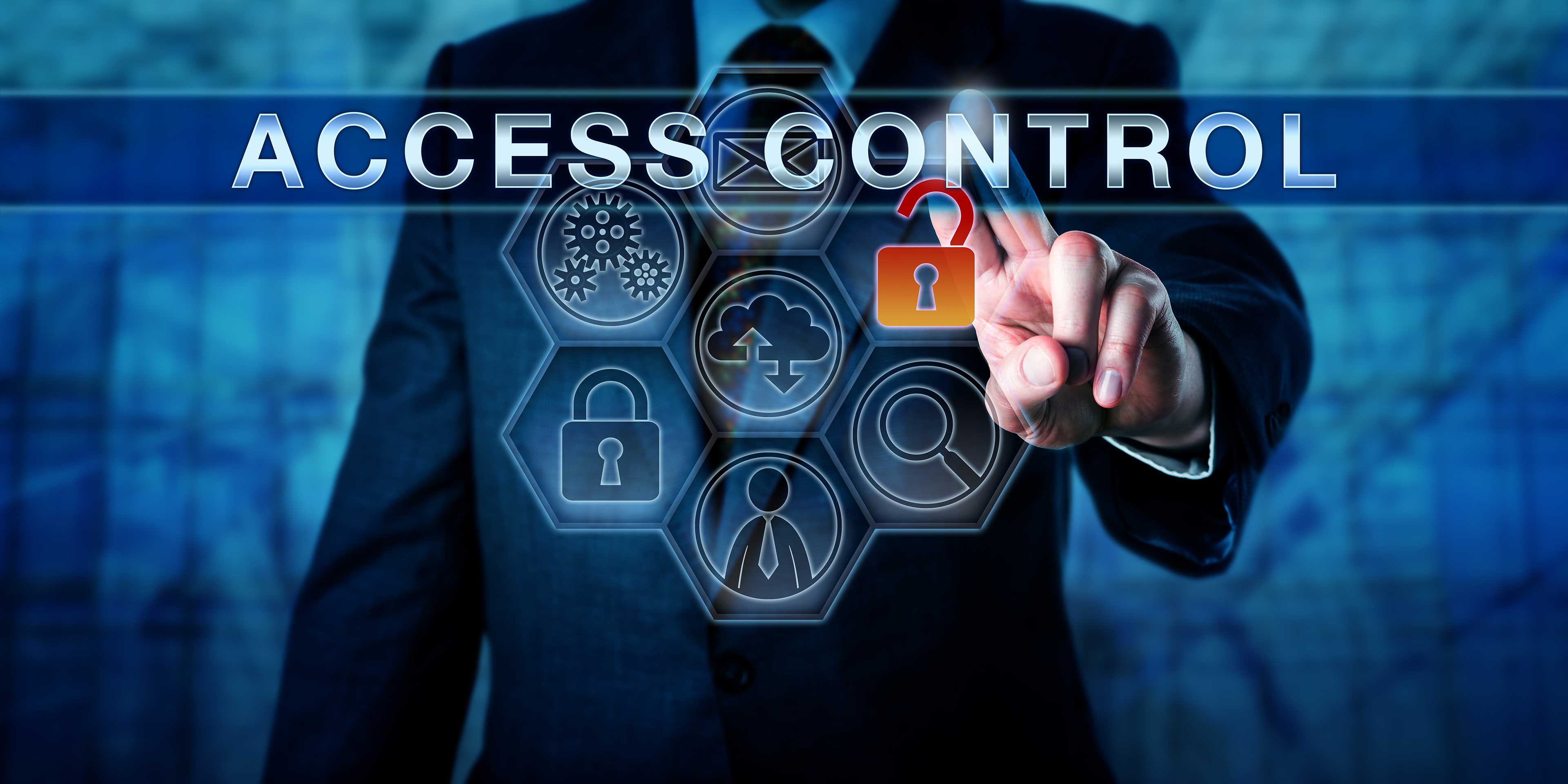
However, installing cables in special enclosures has far-reaching ramifications: unexposed cabling complicates maintenance and makes visual inspection difficult, which can hide progressive damage until it results in complete communication failure. This, along with the fact that no means of external protection can replicate indoor conditions, makes cable selection the determining factor in designing CCTV cabling installation.
High-quality insulating materials can be augmented, but never replaced, by enclosures and conduits. External-grade cables are designed to withstand a higher level of environmental stress than internal-grade cables; they use special materials for the insulation and shielding layers, and consequently last longer and are less likely to fail unexpectedly.
The quality of the cable’s insulator is not the only concern which influences cable selection. In fact, the primary factors involved in this decision are bandwidth and power requirements.
Cables installed outdoors are not only exposed to weather and dust, they are exposed to a higher level of radiation and interference than indoor cables. Therefore, cabling installation guidelines and standards impose slightly higher requirements related to noise immunity – all in order to guarantee the bandwidth required by modern electronic security systems.
Industry-specific guidelines such as the Building Industry Consulting Service International’s (BICSI) Electronic Security Systems Design Reference Manual (ESSDRM), or the ANSI/BICSI 005-2016 standards go into great detail about which cable types to use for each component of a security system. The requirements are, in fact, far too detailed to discuss them at length here, but a few often-overlooked guidelines can be distilled.
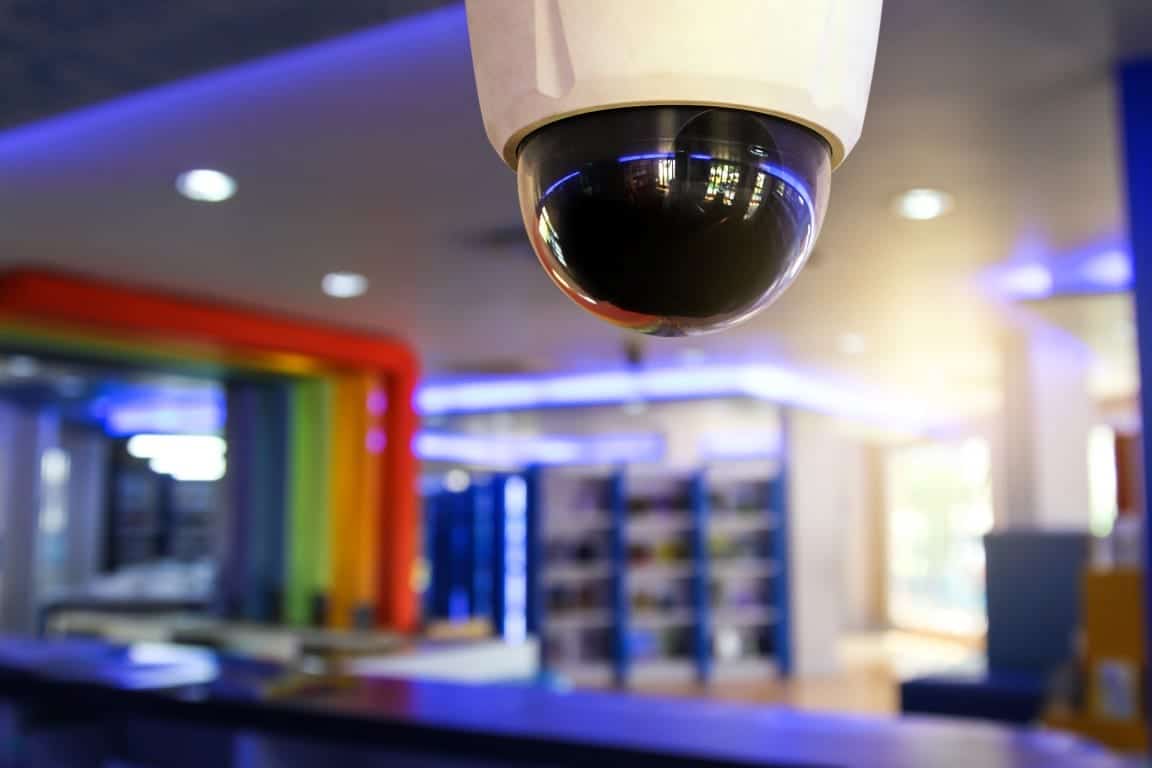
Modern Ethernet cables are twisted-pair copper cables: the way electromagnetic fields behave makes it very useful to twist wires as tightly together as possible, minimizing the surface between each pair of wires – hence the name “twisted-pair”. Simply braiding the eight copper wires of an Ethernet cable is usually enough to maintain good signal integrity for unpretentious indoors deployment, but is almost always insufficient for CCTV cabling.
One way to offer additional immunity to EM interference is to “dress” these twisted pairs of cables in one or more additional metal foils, called shields (when they cover each pair individually), foils or braid screens (when they cover all pairs together). Such cables (STP, SFTP, S/UTP and F/UTP) offer a far better immunity than unshielded (UTP) cables, and are often the only ones which are appropriate for security cabling, especially in high-interference environments, such as manufacturing floors or London offices that make extensive use of wireless equipment.
Installing shielded cables is not entirely trivial, though: in order for the shielding to be effective, it needs to be electrically grounded, which requires specific procedures and materials in order to be done properly, and high-quality measurement equipment in order to confirm proper installation.
Furthermore, EM interference is usually not just mitigated by using cable shielding, but also minimized by adequate cabling design. CCTV cabling installation guidelines and standards recommend or require that signal cables not run in close proximity to mains power cables or other low- or high-voltage cables, for example – an implementation solution that can dramatically reduce troubleshooting expenses, but which requires significant planning effort.
The last concern that we mentioned is proximity to potentially malicious actors. This is, perhaps, the most unique trait of security cabling. Immunity to environmental factors and electrical interference is required in other types of networking. However, security cabling must withstand not only the accidental influence of environmental factors, but also the deliberate action of potential intruders.
When it comes to protection against tampering, proper installation is the main defense mechanism. NCP109 recommends that cables be installed only within areas that can only be access by the presentation of a valid credential (known as controlled areas) and using suitable protection when that is not possible. CCTV cabling is inherently one of the sections of a network’s cabling which cannot run only through controlled areas, which is why it typically requires at least some basic form of protection in some areas. Standard cable conduits, trunking and armour are deployed as means of protection, and while the planning effort they involve is non-trivial, most of the effort is involved in proper installation, as it requires special tools and skills.
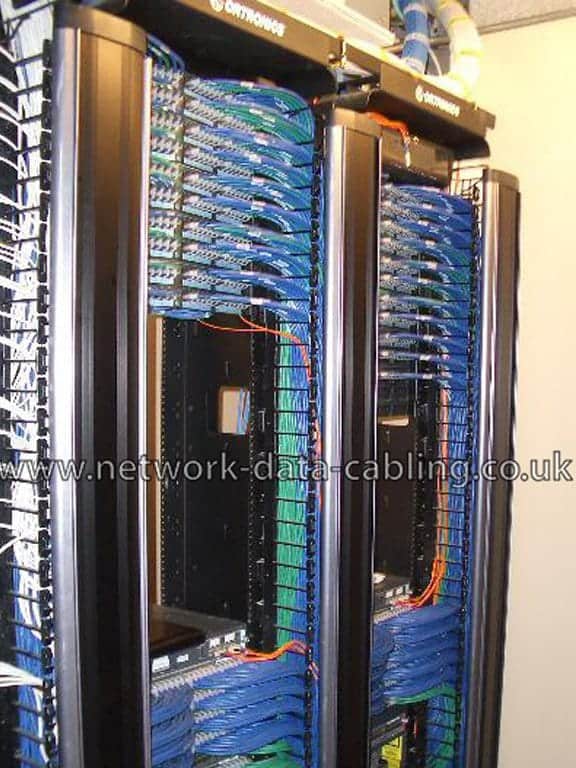
Designing Durable Cabling Solutions
Concealing cables, deploying them inside specific enclosures, using junction boxes and other features specific to ESS and telecommunication cabling makes a complete overhaul of a network’s cabling a very expensive operation. Furthermore, the fact that cabling tends to be the least expensive component of the network and the one with the slowest ROI means that most business customers need to aim for long life periods (15, even 20 years) for their security cabling.
However, technology does not stand still. Deploying cabling that is already obsolete, or on the verge of obsolescence, may shorten the network’s lifetime simply because, ten years down the road, it will no longer be compatible with contemporary security equipment. Replacing sections of cabling halfway through its end of life is needlessly expensive in and of itself, without factoring in network downtime and integration difficulties.
As far as copper cabling is concerned, Category 6 (Cat6) cables are the safest bet, but Cat5e cables can also be a good option for certain scenarios. OM3/4 and OS1/2 fiber standards are likely to be supported for the foreseeable future, too, but their use in security systems is restricted to very specific, large-area deployments.
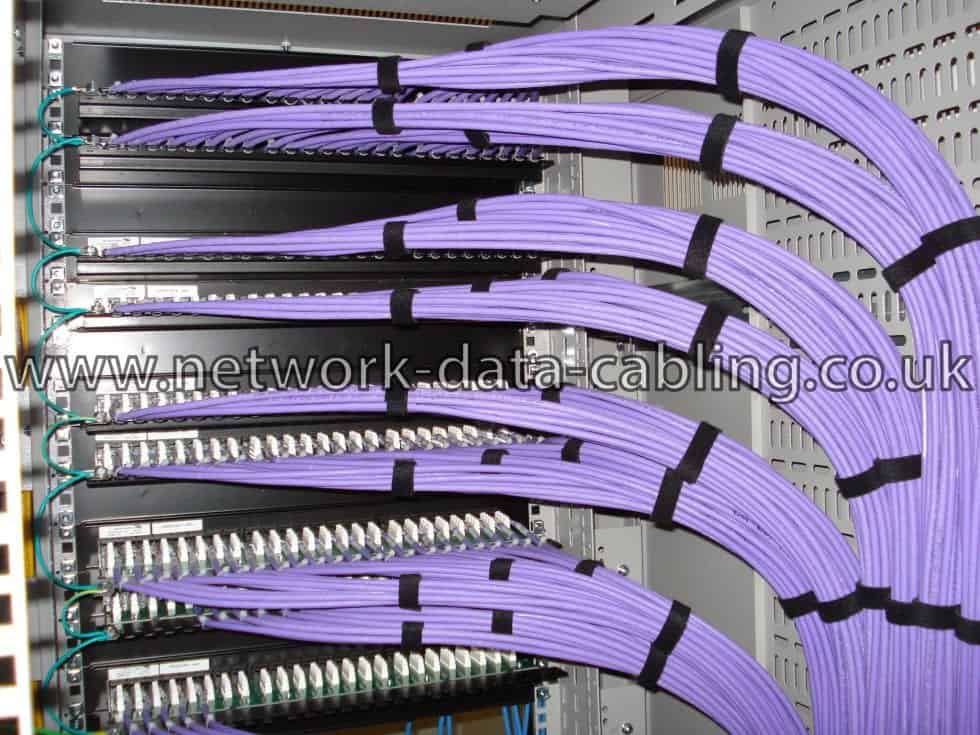
Conclusions and Recommendations
The move towards IT-integrated security systems has caused significant changes in how we approach CCTV cabling. The higher data capabilities of these systems – better video, better telemetry, advanced management options – has dramatically improved the efficiency of modern electronic security systems, but it has also resulted in higher data bandwidth demands. Furthermore, the paradigm shift in the way we design physical security systems, from a component-centered approach to a system-oriented approach, means that the cabling of the security network is even more important than before.
Security cabling needs to sustain these high data demands, while also offering protection against electrical interference, environmental factors, and potential intruders. Interference immunity is primarily implemented through shielding and adequate routing. Cable selection plays an important role in ensuring long-term immunity to environmental factors, but this – along with protection from tampering – is also achieved by deploying special protection features, such as cable conduits.
Designing, installing and routing CCTV cabling is done according to several recognized standards and guideline sets. Planning requires an intimate familiarity with these regulations, and installation requires specific skills and equipment, which is why it is generally recommended to be performed only by trained engineers and technicians.
If you’re looking for sturdy, future-proof CCTV cabling installation or repair for your London office building, make sure that the company who performs it does more than abide by the standards and regulations. Of course, they are extremely important and should never be overlooked. But if you truly want the best ROI out of your security cables installation, you need to work with someone who understands your business, its needs and the particularities of your office building and its surroundings.
At ACCL we have decades of experience in cable installation for London office buildings of all sizes. We abide by all the standards and regulations, but we do more than that: we make sure that both your investment and your network are safe. We always keep your bottom line in mind.
We’d love to meet with you and go over your security cabling needs. We’re sure our skilled engineers can help you, so give us a call or drop us a line to schedule your appointment.
Services mentioned in blog post: CCTV installation,Access Control,Security barriers,Ethernet cabling,Data cabling installation
Related topics: CCTV install mistakes Augmented Category 6 cable


